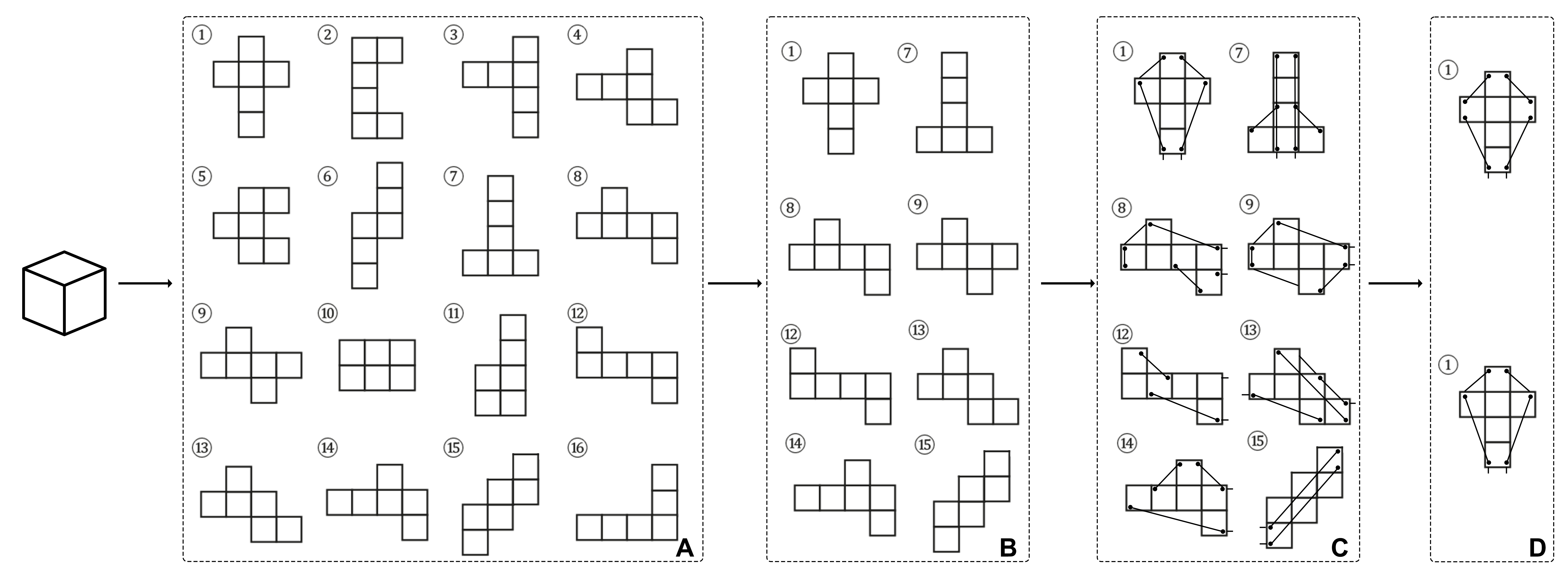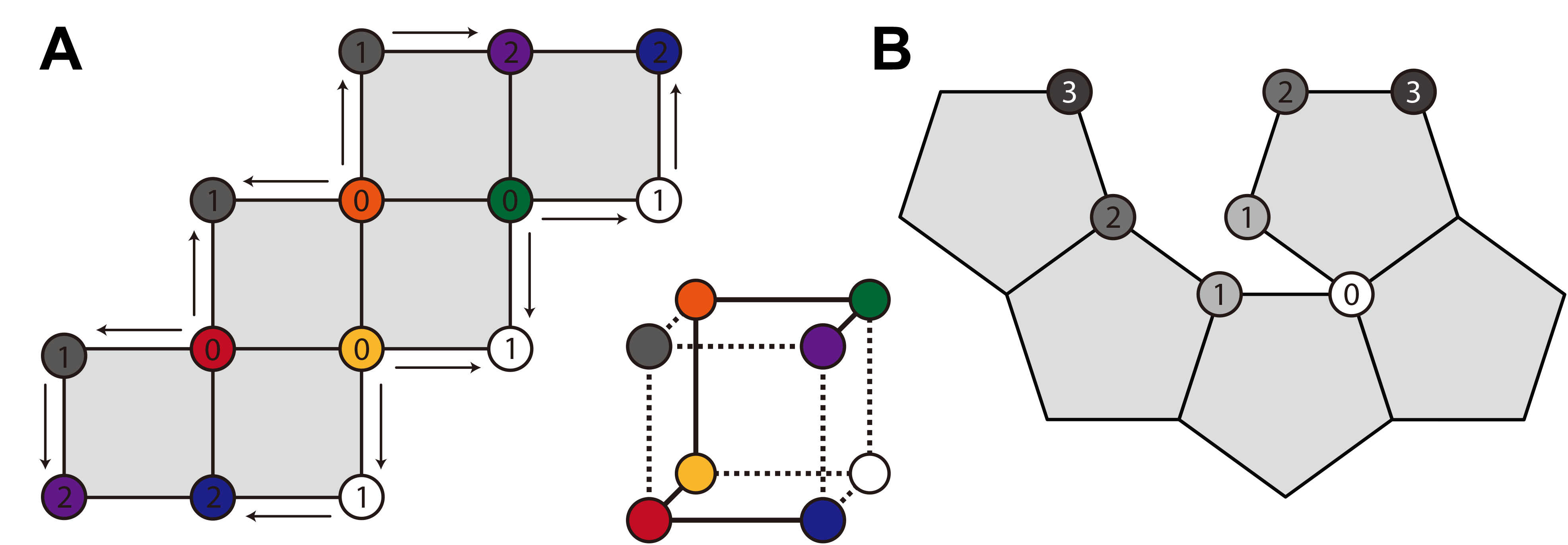- The paper introduces a digital fabrication pipeline using pull-up nets to transform laser-cut 2D sheets into 3D structures.
- It utilizes heuristic algorithms to unfold polyhedral meshes into non-overlapping nets, optimizing thread routing and structural stability.
- The method enables rapid prototyping of both aesthetic and load-bearing designs, with applications in education, VR, and functional furniture.
PullupStructs: Digital Fabrication for Folding Structures via Pull-up Nets
Introduction
The paper "PullupStructs: Digital Fabrication for Folding Structures via Pull-up Nets" presents a method for transforming 2D laser-cut sheets into 3D structures through the use of pull-up nets. This technique primarily addresses the limitations inherent in traditional laser-cut 3D construction, which often involves labor-intensive manual folding or complex mechanical support. By harnessing the mechanical simplicity of strings routed through cut sheets, structures can be assembled with a single degree of user-controlled freedom.

Figure 1: Our digital fabrication pipeline enables users to rapidly prototype 3D objects. It features (A) a web-based tool for uploading and rendering 3D meshes. The tool executes our unpacking algorithm which unfolds the mesh into a (B) planar sheet partitioned into faces with through-holes in them. (C) We fabricate these unfolded geometries on a laser cutter, route thread through the holes, and pull the thread to fold the sheet into its target structure.
Fabrication Pipeline
This research introduces a digital fabrication pipeline supported by a web-based visualization tool, enabling users to upload and render 3D meshes, and mechanically transform them into fabricable 2D layouts. The pipeline incorporates heuristic algorithms to unfold a 3D mesh into a planar sheet marked with cutlines and throughholes for threading. Once the sheet is laser-cut and the threading route optimized, users manually thread and pull to achieve the final 3D structure.
Algorithmic Framework
The unfolding of polyhedral geometries is achieved using heuristic-based methods to address the non-trivial problem of unraveling 3D meshes into planar forms. This involves optimizing for non-overlapping nets and minimizing the routing complexity of the pull-up strings.

Figure 2: Unfolding a cube. (A) There are multiple potential ``nets'' for a cube but not all can be successfully pulled up to become a cube again. (B) Potential successful ways for folding up from a 2D net to a cube. (C) Location of the string to pull up 2D net back to the 3D cube (D) Even for the same 2D net, there can be many ways to route the string in order to fold the 3D shape.
Additionally, the paper details a method for identifying optimal vertex pairs that need to be joined by strings with a focus on minimizing string length and friction-enhanced resistance during assembly. Demanding the mesh be minimalist in its use of string and robust when formed, the paper leverages computational geometry to refine structural efficiency.

Figure 3: Examples of folding 3D polyhedra using pull-up nets: By convention, one surface (in grey) of the unfolding nets remains fixed during the folding procedure, helping stabilize the structure while users actuate the fold.
Applications and Implementations
The practical applications of these fabricated structures are expansive, ranging from educational models and VR props to load-bearing furniture like bookshelves and stools. The system supports a repertoire of over 141 polyhedral designs and allows for custom upload, positioning it as a versatile tool for designers and engineers.

Figure 4: Structures fabricated using our pipeline range from regular polyhedra to organic shapes, and from load-bearing to aesthetic, across a range of scales, for applications that include VR, education, and functional load-bearing contexts.
Limitations and Future Work
Despite its innovative approach, the paper acknowledges several limitations, including computational demands for high-complexity meshes and friction issues with long string paths. There's further work needed on the software’s automation capabilities, particularly in streamlining the fabrication process and ensuring rigid structures with minimal human adjustment. Future work suggests enhancement of the algorithm for complex geometries and potential improvements in material selection, further expanding the functional capacity and load sustainability of the fabricated structures.
Conclusion
In conclusion, this paper presents a novel approach to the fabrication of 3D structures from 2D sheets using pull-up nets. This robust yet simple method enables the rapid prototyping of both aesthetic and functional 3D designs without extensive user intervention or complex machinery, marking a significant contribution to the field of digital fabrication. The envisioned trajectory of future enhancements suggests that such techniques can significantly impact areas like rapid prototyping and educational tools, offering new possibilities for adaptive and responsive material manufacturing.



